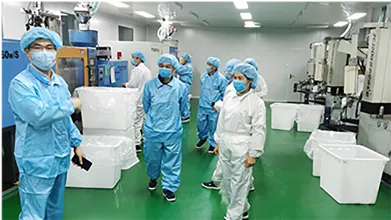https://www.wahmg.com/)">
microbiology lab instruments
microbiology lab instruments
Microbiology Lab Instruments Essential Tools for Research and Diagnosis
Microbiology, the study of microorganisms, plays a crucial role in various fields including medicine, agriculture, and environmental science. The tools and instruments used in microbiology labs are vital for conducting experiments, diagnosing diseases, and advancing our understanding of microbial life. This article highlights some essential microbiology lab instruments, their functions, and their importance in research and clinical settings.
One of the most fundamental instruments in microbiology labs is the microscope. Microscopes, particularly light microscopes and electron microscopes, enable scientists to visualize microorganisms that are typically invisible to the naked eye. Light microscopes use visible light and lenses to magnify specimens, allowing for the observation of cellular structures and the identification of bacteria. Electron microscopes, on the other hand, use electron beams to achieve much greater magnification, revealing intricate details of microbial morphology.
Another critical instrument is the autoclave, a device used for sterilization. Autoclaves utilize high-pressure steam to eliminate all forms of microbial life, including bacteria, viruses, and spores. This process is essential for ensuring the sterility of lab equipment, culture media, and other materials, preventing contamination that could compromise experimental results or patient safety.
Incubators are also vital in microbiology labs. These instruments provide a controlled environment with regulated temperature, humidity, and gas concentrations, essential for the growth and cultivation of microorganisms. Specific temperatures and conditions promote the growth of respective microbial species, allowing researchers to study their behavior, growth patterns, and interactions with other organisms.
microbiology lab instruments

For cultivating and observing microorganisms, Petri dishes and agar plates are indispensable. Agar plates provide a nutrient-rich medium for growing bacteria and fungi. Researchers can easily isolate and identify colonies of microorganisms by streaking a sample across the agar surface. This method is fundamental in clinical diagnostics for identifying pathogens and assessing antibiotic susceptibility.
Additionally, pipettes and microliter syringes are crucial for handling liquids with precision. These instruments allow microbiologists to accurately measure and transfer small volumes of liquids, whether mixing reagents, inoculating cultures, or performing dilutions. The accuracy provided by pipettes is essential for obtaining reliable experimental results.
In modern microbiology, PCR (Polymerase Chain Reaction) machines have revolutionized the detection and analysis of microorganisms. PCR allows for the amplification of specific DNA sequences, enabling the identification of pathogens and genetic analysis. This technology has become essential in clinical diagnostics, environmental monitoring, and research, facilitating the rapid and precise detection of microbes.
Finally, modern labs are increasingly utilizing automated systems and bioinformatics tools that streamline processes and enhance analysis capabilities. These technologies facilitate the rapid processing of samples and the interpretation of complex data, ultimately accelerating research and improving diagnostic accuracy.
In conclusion, microbiology lab instruments are essential for advancing our understanding of microorganisms and improving public health. From microscopes and autoclaves to incubators and PCR machines, each instrument plays a unique role in research and diagnostics. As technology continues to evolve, the capabilities of microbiology labs will expand, leading to more significant discoveries and improved outcomes in various fields.
-
Wholesale Plastic Juice Bottles with Caps 16 oz Options Available Bulk Packaging SolutionsNewsJun.10,2025
-
Laboratory Apparatus Reagent Bottle – Durable & Chemical Resistant Bottles for Safe StorageNewsJun.10,2025
-
Squeezable Dropper Bottles Durable, Leak-Proof & CustomizableNewsMay.30,2025
-
Affordable Plastic Petri Plates Sterile & Disposable Lab-GradeNewsMay.30,2025
-
Eye Dropper Caps Precision 24/410 & Plastic Bottle-Compatible TipsNewsMay.30,2025
-
Affordable Mini Spray Bottle Price & Wholesale Deals Shop NowNewsMay.29,2025





















